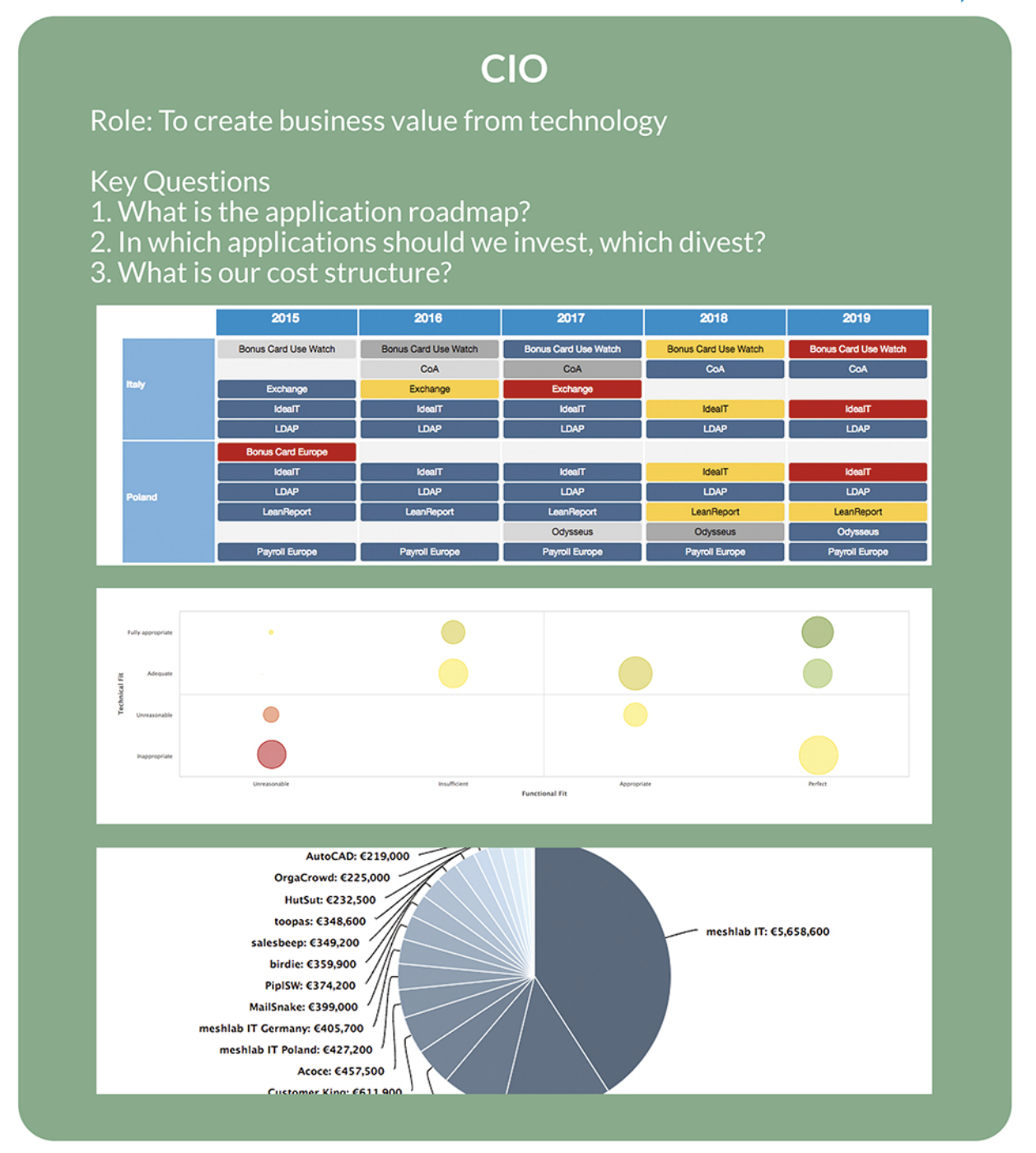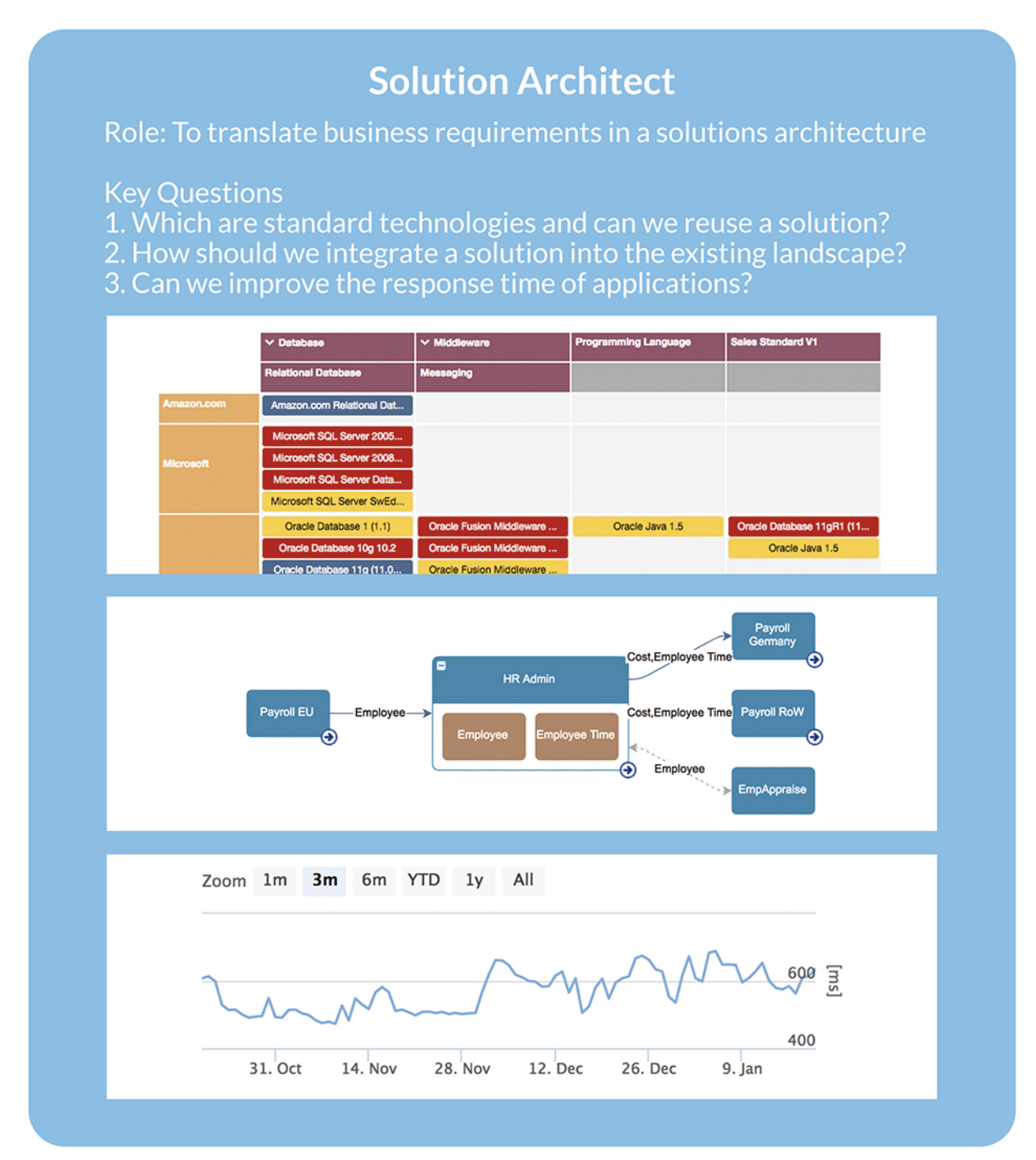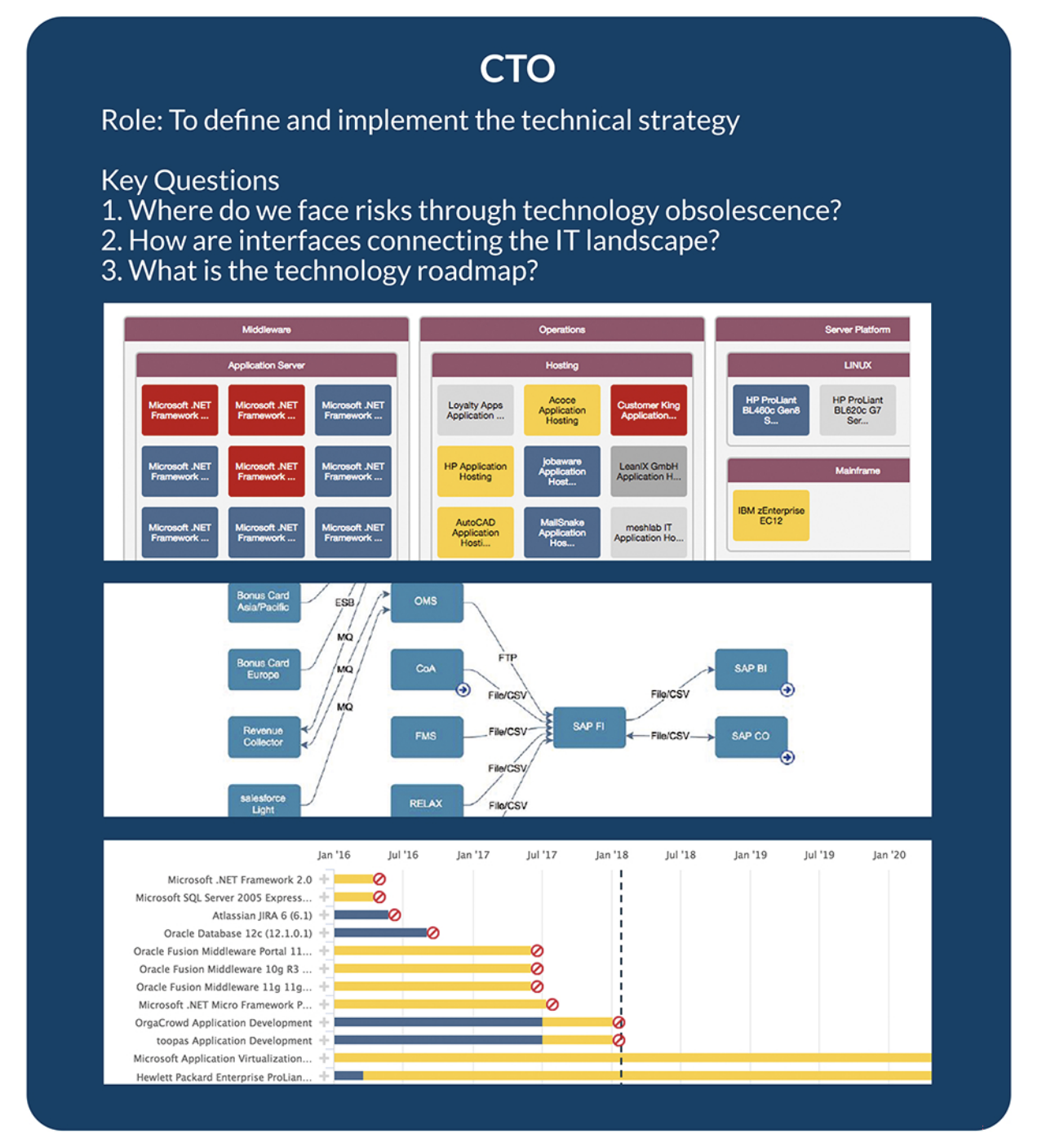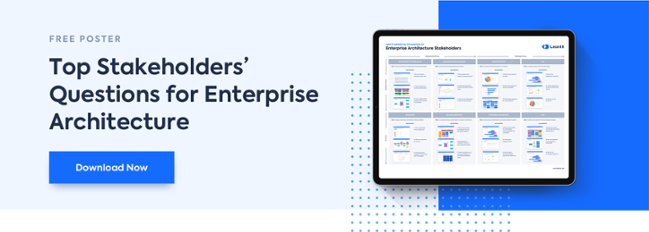
The correct enterprise architecture supports the needs of various stakeholders. Each stakeholder has different informational needs that can be solved by enterprise architecture.
For example:
- Which applications support my processes? (BPO)
- What risks are posed by technological obsolescence? (CTO)
- Which applications contain sensitive data? (CISO)
After five years in the EAM field, we've collected the top questions from each stakeholder and devised ways to answer them use Enterprise Architecture views.
1. Data Security & Compliance Officer
Role: To ensure compliance of applications and data processing company-wide. The compliance officer would have certain questions that could be answered by enterprise architecture, including:- Do we comply with defined security rules?
- How is sensitive data transferred through the IT landscape?
- Which applications contain sensitive data?
These questions can be answered with Enterprise Architecture views:
- A risk assessment survey
- A dependency map
- Display tags on a fact sheet: confidential or not.
2. Business Process Manager
Role: To document and improve business processes. The business process manager would have certain questions that could be answered by enterprise architecture, including:- Which applications support my processes?
- How well is the functional fit for a certain process step?
- What are the technology failure impacts on business processes
These questions can be answered with Enterprise Architecture views:
- An application matrix that denotes users
- A heatmap of the application landscape where users can rate the functional fit of each application supporting each process
- A data flow model that denotes the impacts on processes in case of tech failure.
3. Finance Officer
Role: To oversee the financial health of a company. The finance officer would have certain questions that could be answered by enterprise architecture, including:- What is the IT spend by provider?
- What is the IT spend per business capability?
- What budget is planned for certain projects?
These questions can be answered with Enterprise Architecture views:
- A vendor landscape that includes the total spend by each provider
- Business capability map including total cost per capability
- Business capability cost organized by each project

4. CIO
Role: To create business value from technology. A CIO would have certain questions that could be answered by enterprise architecture, including:- What is the application roadmap?
- In which applications should we invest, in which applications should we divest?
- What is our cost structure?
These questions can be answered with Enterprise Architecture views:
- Application lifecycle map
- Application matrix displaying the functional and technical fit of each application
- A Heat map displaying providor costs
5. Developer
Role: To design, install, test, and maintain software systems. Developers would have certain questions that could be answered by enterprise architecture, including:- Who is responsible for a microservice?
- How can I cut a monolithic application into microservices?
- Which microservices do we use?
These questions can be answered with Enterprise Architecture views:
- User subscriptions for each application
- A conceptual model displaying how to break up a microservice
- A dependency interface between microservices

6. Solution Architect
Role: To translate business requirements into a solution architecture. Solutions Architects would have certain questions that could be answered by enterprise architecture, including:- Which are standard technologies and can we reuse a solution?
- How should we integrate a solution into the existing landscape?
- Can we improve the response time of applications?
These questions can be answered with Enterprise Architecture views:
- A lifecycle view of an IT component matrix
- A data flow model that includes applications and data objects
- Response time metrics
7. IT Program Management
Role: To ensure the successful delivery of several related IT projects. IT Program Managers would have certain questions that could be answered by enterprise architecture, including:- Which applications are affected by which projects?
- Is the project budget on track?
- Which projects provide the highest value?
These questions can be answered with Enterprise Architecture views:
- Project roadmap, sorted by lifecycle
- Project budget breakdown
- Project portfolio metrics

8. CTO
Role: To define and implement the technical strategy. A CTO would have certain questions that could be answered by enterprise architecture, including:- Where do we face the risk of technology obsolescence?
- How are interfaces connecting the IT landscape?
- What is the technology roadmap?
These questions can be answered with Enterprise Architecture views:
- A lifecycle view of the IT component landscape
- An application interface model
- A lifecycle view of the IT component roadmap
![How to Answer the Top Questions of Enterprise Architecture Stakeholders [Poster]: Align business and IT and learn how to support each of their needs. »](https://no-cache.hubspot.com/cta/default/2570476/9bf74c6d-ebaf-41f4-ac30-0a0282b2fe43.png)





